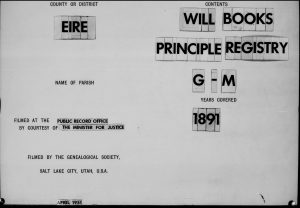About six years ago I was involved in validating the first transcriptions of Catholic parish registers being made from National Library microfilms for IrishGenealogy.ie. The process required detailed scrutiny of the original image for every transcript that didn’t match my list of standard names, or that just looked fishy. So I had to scrutinise records I wasn’t actually searching for. In the baptismal register for Skibbereen, I came across this:
“23 November 1827 Catharine of Richd Leonard and Mary Regan, New Bridge, Sponsors: John Glosson Cate Sullivan”
I’m not sure why I thought it looked fishy, but when I went to the image, I found a very good reason for always checking the original:

It reads: “Nov. 23 1827 Catharine a bastard reputed daughter of Rich’d Leonard a soldier and Mary Regan wife of Tim Lordan late of New Bridge now living in Crookhaven. The mother of this infant is not only a public adulteress but also connected with a gang of coiners or makers of false money. Sponsors: John Glasson Cate Quinlivan by Rev P. Sheehy”.

One of the reasons, the Church was so squeamish for a long time about access to its historic records was fear that they might be full of stuff like this, PPs foaming at the mouth with steam coming out their ears, spouting material ripe for a good long libel case up in the Four Courts. It’s certainly true that the Rev P. Sheehy sounds apoplectic: he goes out of his way to make clear that the strumpet is not living in his parish, Skibbereen, but away beyond in that notorious den of iniquity, Crookhaven.
But Catharine, Richard, Mary and Tim are all long dead, as is the Rev P. Sheehy. And what they’ve left behind here are the bones of a Victorian three-decker melodrama, the most wonderful skeleton-in-the-closet you could possibly imagine.
And just to show that Church indignation was highly selective, here’s another baptism from that same batch, from Bantry, also in West Cork, on June 24 1825:
“John of Rich’d Earl of Bantry & Cath Sullivan Sp Mich’l Lenihan & Julia Bourk (spurious)”.
How very discreet.
[A version of this post first appeared as the December Document of the Month on the site of Accredited Genealogists Ireland. ‘Tis the season to be lazy.]





